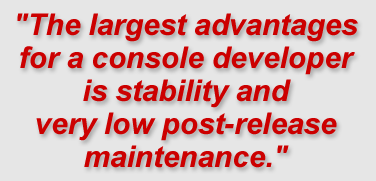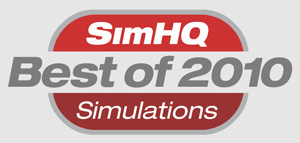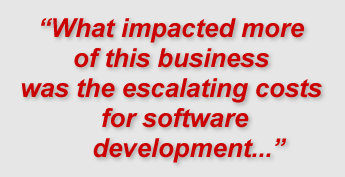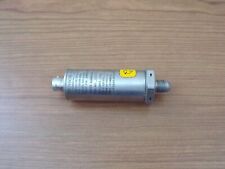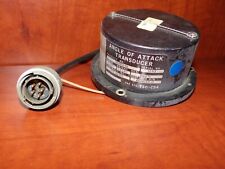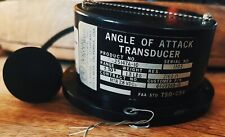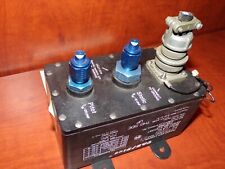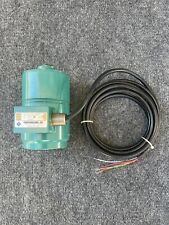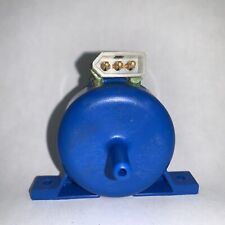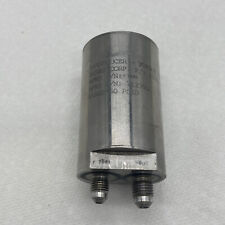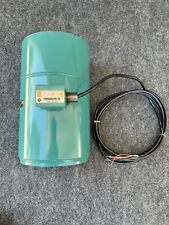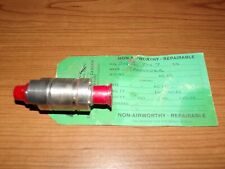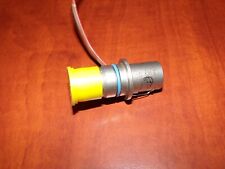Continued from Page 3 Controllers and Peripherals 20mm: In the world of simulations, game developers and those who make controllers and peripherals have always had a symbiotic relationship — both exist to help the other. How closely to game developers work with controller designers and how early are they brought into game design? 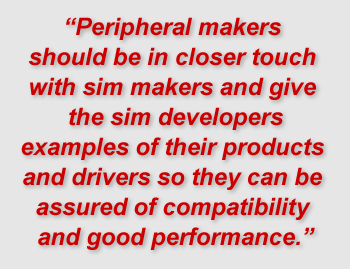 Jason: Peripheral makers should be in closer touch with sim makers and give the sim developers examples of their products and drivers so they can be assured of compatibility and good performance. We have had problems in this department and frankly, as someone who has sold just about every controller under the sun, the controller manufacturers don’t have a clue half the time. Of course not all have their thumb up their behind, but most do not understand the relationship you speak of. Oleg: Really, not always. I have said many times that it would be good to sell separately joystick and throttles for flight sims. Users should be able to select by the price, features, and quality by themselves. Also, a user would like to build customizable system of peripheral controls — and get just what he needs. Ssnake: Armor simulations don’t play a role here. Every vehicle comes with their own control handles and control panels, and the market for armor simulations is tiny. So the reality is, there simply are no consumer grade gunnery control handles. NaturalPoint TrackIR is of limited use in an armor simulation, as is force feedback. We do have however contacts with manufacturers of control handle replicas for the military training market, and we managed to bring down the costs of them to about a third of what they used to cost before. That’s not a bad achievement, but unfortunately without practical consequence to the average armor enthusiast. Dante: It is indeed close and they’re very supportive — we’ve got contact from NaturalPoint for example, they sent a sample unit, the SDK, and all was fine, our product now supports their TrackIR. Matrox did the same in the past for their TripleHead2Go units, which we also supported. How early are they brought in? Around middle of the development, when the project starts to achieve some critical mass. Polovski: Each helps the other. We worked closely with NaturalPoint for example, and provided code to support TrackIR in our sim inWindows Vista and Windows 7. But it’s important to support up coming new technologies too — of course it takes resources, and that has to be balanced some. Flexman: Well, this is not something I’ve experienced from the dominant manufacturers, not without trying either. I’m guessing they don’t like engaging with independents, to date the only two peripheral makers have returned my emails, the makers of the Virtual Blade helicopter system and Naturalpoint makers of the TrackIR. I’m working with both of them to provide full support for their controls. Happy to work with others but we’re not in the show circuit yet which is where face-to-face contact is made. We did one show so far to get a feel for it. 20mm: Is controller discussion at the forefront of the game development process, or does it primarily come into focus as development nears conclusion? Buckshot: In our development process nontrivial controllers come into focus once our basic modules are up and running. Afterwards our support for them matures as we reach the end of development. We have been fortunate to establish good communications and cooperation with some of the major controller and peripheral manufacturers to ensure that we are able to provide support out of the box for the majority of the most popular interfaces. Polovski: Standard controllers are usually a known entity but you have to keep looking at what is up-coming. Flexman: Very important. It’s the primary game interface. How much goes where, even the flexibility of the configuration system. In the case of NaturalPoint TrackIR it was a no-brainer. The Apache makes extensive use of head-tracking, it was integrated early on in the camera and view system but it’s also used for gun control. Head position data is passed between pilots for the optical tracking system and the heads up display will show your buddy’s TrackIR / head position. You can play without a head tracker, even using mouse or thumb stick control, but you really get an amazing feeling of being in the cockpit using it. 20mm: What drives the controller development cycle? Is it closely tied to game development, or does it lag and react to new simulation title releases? Or is there any connection at all? Flexman: So far we’re happy to bend over backwards to accommodate hardware ideas. We anticipate Combat-Helo to be used in a few big screen environments; one contributor to the project is building a monocle display device so I added some code to enable a special rendering mode to separate the HMD from the main display. Recently I added a render target that’s a “curved surface” that can mimic curved geometry of a projected display, still experimental, but it was very easy to do with the kind of engine we’re using. It’s knowing what sorts of hardware people might want to support in advance and if it’s easy then no problem. Dante: Looks like it lags and reacts to new simulation title releases. Although, as a simmer looking from the outside, it looks like there has been some connection between the recently released Thrustmaster HOTAS Warthog and Eagle Dynamics’ DCS: A-10C Warthog. The timing was spot on. Buckshot: This is kind of a “chicken and egg” question. I think you need both to survive, there’s no point creating a particular type of game for a system which has no suitable controllers. A good example being a high fidelity flight simulation for the X-Box or Playstation. At the same time though, nobody is going to create a high-end controller without there being a market for that controller, i.e. a game to use it for. Software seems the most likely driver however, as low cost games can be produced to test the waters so to speak, attract an audience and prove a market exists for a type of controller which then can be utilized further in future more advance software, this is how I see the development of in-depth simulation for consoles will progress at some time in the future.
Jason: Peripheral makers should be in closer touch with sim makers and give the sim developers examples of their products and drivers so they can be assured of compatibility and good performance. We have had problems in this department and frankly, as someone who has sold just about every controller under the sun, the controller manufacturers don’t have a clue half the time. Of course not all have their thumb up their behind, but most do not understand the relationship you speak of. Oleg: Really, not always. I have said many times that it would be good to sell separately joystick and throttles for flight sims. Users should be able to select by the price, features, and quality by themselves. Also, a user would like to build customizable system of peripheral controls — and get just what he needs. Ssnake: Armor simulations don’t play a role here. Every vehicle comes with their own control handles and control panels, and the market for armor simulations is tiny. So the reality is, there simply are no consumer grade gunnery control handles. NaturalPoint TrackIR is of limited use in an armor simulation, as is force feedback. We do have however contacts with manufacturers of control handle replicas for the military training market, and we managed to bring down the costs of them to about a third of what they used to cost before. That’s not a bad achievement, but unfortunately without practical consequence to the average armor enthusiast. Dante: It is indeed close and they’re very supportive — we’ve got contact from NaturalPoint for example, they sent a sample unit, the SDK, and all was fine, our product now supports their TrackIR. Matrox did the same in the past for their TripleHead2Go units, which we also supported. How early are they brought in? Around middle of the development, when the project starts to achieve some critical mass. Polovski: Each helps the other. We worked closely with NaturalPoint for example, and provided code to support TrackIR in our sim inWindows Vista and Windows 7. But it’s important to support up coming new technologies too — of course it takes resources, and that has to be balanced some. Flexman: Well, this is not something I’ve experienced from the dominant manufacturers, not without trying either. I’m guessing they don’t like engaging with independents, to date the only two peripheral makers have returned my emails, the makers of the Virtual Blade helicopter system and Naturalpoint makers of the TrackIR. I’m working with both of them to provide full support for their controls. Happy to work with others but we’re not in the show circuit yet which is where face-to-face contact is made. We did one show so far to get a feel for it. 20mm: Is controller discussion at the forefront of the game development process, or does it primarily come into focus as development nears conclusion? Buckshot: In our development process nontrivial controllers come into focus once our basic modules are up and running. Afterwards our support for them matures as we reach the end of development. We have been fortunate to establish good communications and cooperation with some of the major controller and peripheral manufacturers to ensure that we are able to provide support out of the box for the majority of the most popular interfaces. Polovski: Standard controllers are usually a known entity but you have to keep looking at what is up-coming. Flexman: Very important. It’s the primary game interface. How much goes where, even the flexibility of the configuration system. In the case of NaturalPoint TrackIR it was a no-brainer. The Apache makes extensive use of head-tracking, it was integrated early on in the camera and view system but it’s also used for gun control. Head position data is passed between pilots for the optical tracking system and the heads up display will show your buddy’s TrackIR / head position. You can play without a head tracker, even using mouse or thumb stick control, but you really get an amazing feeling of being in the cockpit using it. 20mm: What drives the controller development cycle? Is it closely tied to game development, or does it lag and react to new simulation title releases? Or is there any connection at all? Flexman: So far we’re happy to bend over backwards to accommodate hardware ideas. We anticipate Combat-Helo to be used in a few big screen environments; one contributor to the project is building a monocle display device so I added some code to enable a special rendering mode to separate the HMD from the main display. Recently I added a render target that’s a “curved surface” that can mimic curved geometry of a projected display, still experimental, but it was very easy to do with the kind of engine we’re using. It’s knowing what sorts of hardware people might want to support in advance and if it’s easy then no problem. Dante: Looks like it lags and reacts to new simulation title releases. Although, as a simmer looking from the outside, it looks like there has been some connection between the recently released Thrustmaster HOTAS Warthog and Eagle Dynamics’ DCS: A-10C Warthog. The timing was spot on. Buckshot: This is kind of a “chicken and egg” question. I think you need both to survive, there’s no point creating a particular type of game for a system which has no suitable controllers. A good example being a high fidelity flight simulation for the X-Box or Playstation. At the same time though, nobody is going to create a high-end controller without there being a market for that controller, i.e. a game to use it for. Software seems the most likely driver however, as low cost games can be produced to test the waters so to speak, attract an audience and prove a market exists for a type of controller which then can be utilized further in future more advance software, this is how I see the development of in-depth simulation for consoles will progress at some time in the future.
| SimHQ Special Feature / The Future of Simulations / Table of Contents | |||
|
|
|||
| Page 1 | Page 2 | Page 3 | Page 4 |
| Introduction Participants Consumer Simulations | Software Development | Software Development (continued) | Controllers and Peripherals |
|
|
|||
| Page 5 | Page 6 | Page 7 | |
| Multiplayer | Distribution and Publishing | Copy Protection and Intellectual Property | |
|
|
|||


